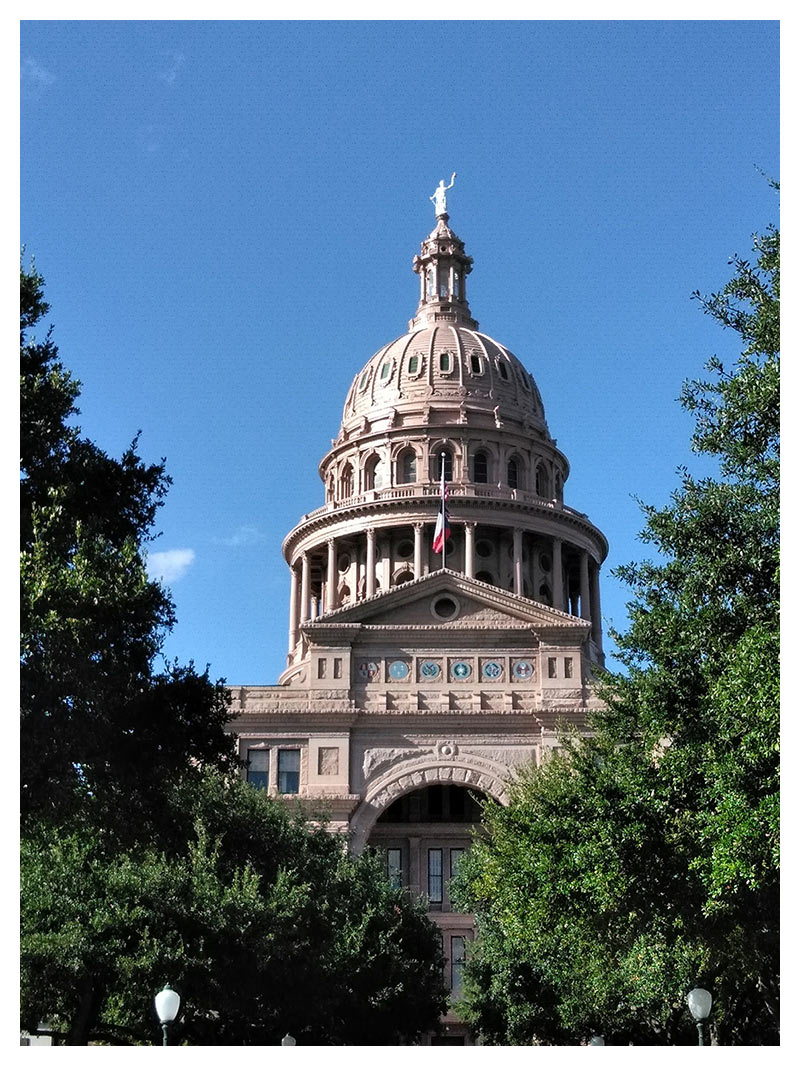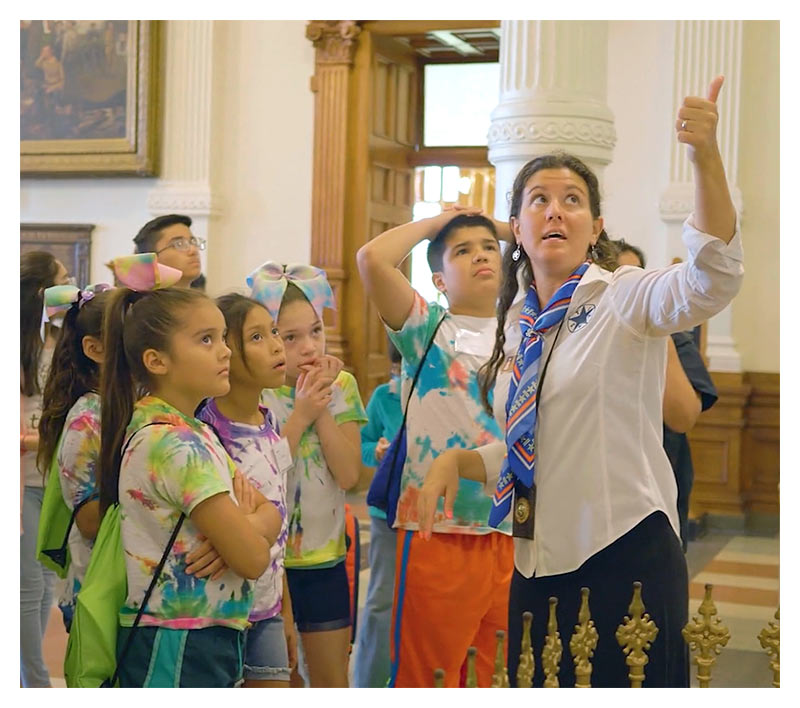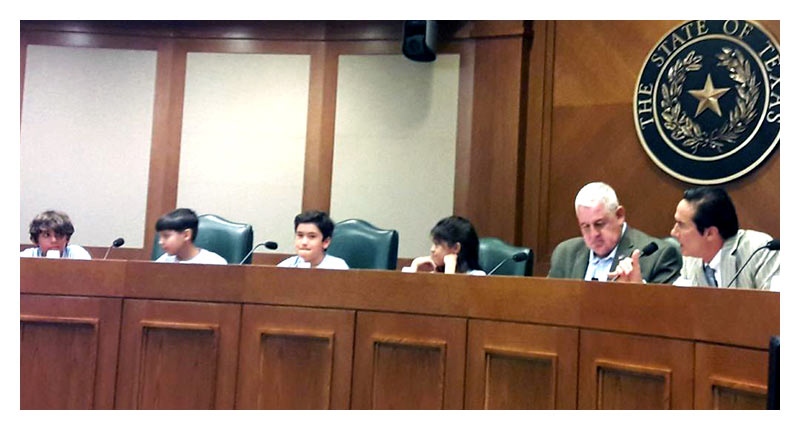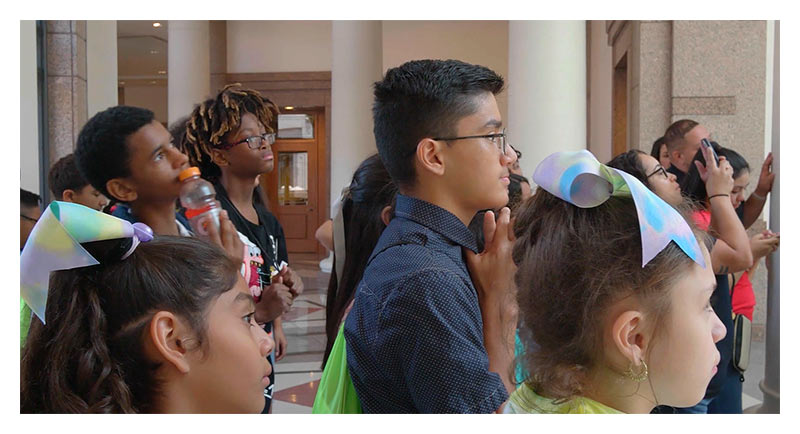Learn more!
If you want to learn more about the Capitol here are some resources you can explore:



FAQ - The Texas Capitol
1How big is the Capitol?
The capitol is a roughly rectangular building with a four-story central block, symmetrical three-story wings extending to the east and west, and a dome rising from the center. It is built in an Italian Renaissance Revival style and modeled on the design of the United States Capitol, but with its exterior clad with local red granite.[3] It contains 360,000 square feet (33,000 m2) of floor space (not including the Capitol Extension), more than any other state capitol building, and rests on a 2.25-acre (0.91 ha) footprint. The building has nearly 400 rooms and more than 900 windows.
2Did the Capitol burn down?
On February 6, 1983, a fire began in the apartment of William P. Hobby Jr., then the state lieutenant governor. The capitol was crowded with accumulated archives, and the fire was intense and came dangerously close to destroying the structure. It caused severe damage to the east wing and compromised much of the framing, which was largely composed of exposed cast iron posts and beams.
Following the fire, the state took advantage of the extensive rebuilding to update the mechanical and structural systems to modern standards. In November 1985, the original Goddess of Liberty statue on top of the dome was removed by helicopter. A new statue, cast of aluminum in molds made from the original zinc statue, was placed on the dome in June 1986. The original statue was restored and displayed on the Capitol grounds in a special structure built for it in 1995; it was later moved to the Bullock Texas State History Museum in 2001.
3What is the Capitol extension?
In 1993, the $75 million, four-story, underground capitol extension was completed to the north, doubling the square footage available to capitol occupants and providing much-improved functionality. Though the extension encompasses 667,000 square feet (62,000 m2) (nearly twice the floor space of the original building), little evidence exists of such a large structure at ground level, except for extensive skylights camouflaged as planter rows, and the four-story, open-air, inverted rotunda.
4What are Captol View Corridors?
The Capitol View Corridors are a series of legal restrictions on construction in Austin, Texas, aimed at preserving the visibility of the Texas State Capitol from various points around the city. First established by the Texas Legislature in 1983 and recodified in 2001, the corridors are meant to protect the capitol dome from obstruction by high-rise buildings. The corridors significantly limit the potential for the development of new tall structures in downtown Austin.
Source: Wikipedia


